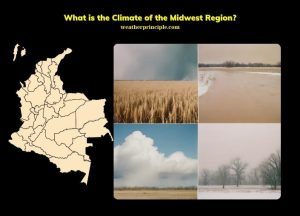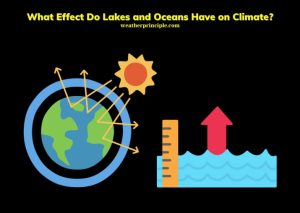Published on: May 13, 2023
Written by Taha Nur / Fact-checked by Kader Khan
Wind is an essential force in our lives, affecting everything from our daily weather to the energy we use. It shapes our landscapes, influences our climate, and plays a critical role in various human activities, including agriculture, aviation, and recreation.
The intricacies of wind speed and direction is crucial in various sectors, such as meteorology, renewable energy, and sports. A comprehensive knowledge of these aspects allows us to harness wind power, predict weather patterns, and make informed decisions across multiple industries.
Wind Speed
What is wind speed?
Wind speed refers to the rate at which air moves horizontally across the Earth’s surface. It is typically measured in kilometers per hour (kph), miles per hour (mph), or meters per second (m/s). Wind speed is an essential factor in determining the energy potential of wind and its impact on the environment.
Factors affecting wind speed
Three primary factors contribute to wind speed:
- Temperature differences: As air heats up, it becomes less dense and rises, creating areas of low pressure. Cooler air, being denser, moves in to replace the rising warm air, creating wind.
- Pressure gradients: Differences in air pressure cause air to flow from areas of high pressure to low pressure. The greater the difference in pressure, the faster the wind speed.
- Coriolis effect: Due to Earth’s rotation, air movement is deflected, causing winds to rotate around low and high-pressure areas.
Measuring wind speed
Various instruments measure wind speed, including:
- Anemometers: These devices use spinning cups or propellers to measure wind speed, with the rotation speed proportional to the wind’s velocity.
- Wind profilers: These radar systems measure wind speed at various altitudes by tracking the motion of atmospheric particles.
Deciphering Wind Direction
Defining wind direction
Wind direction indicates the direction from which the wind originates. It is expressed using cardinal points (e.g., north, south, east, west) or degrees, with 0° or 360° representing north, 90° representing east, 180° representing south, and 270° representing west.
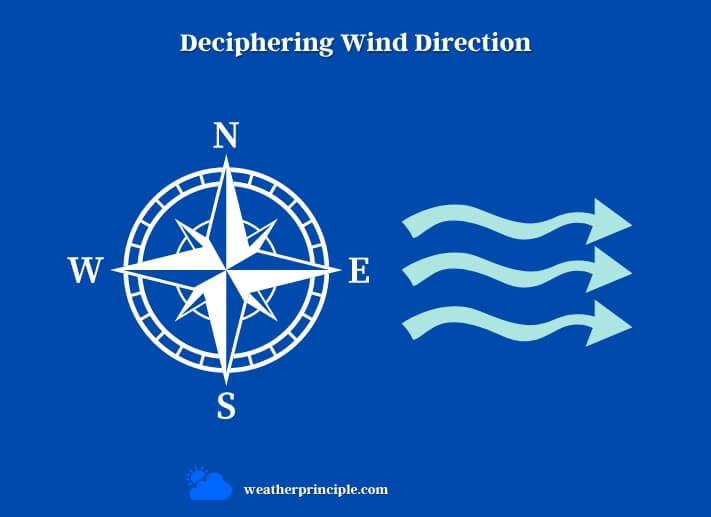
Factors influencing wind direction
Wind direction is influenced by:
- Global circulation patterns: The Earth’s rotation and differences in solar heating create large-scale wind patterns that affect wind direction across the globe.
- Local topography: The shape of the land, such as mountains, valleys, and coastlines, can influence wind direction by channeling or blocking airflow.
- Seasonal changes: Seasonal shifts in temperature and pressure patterns can lead to changes in prevailing wind directions.
Measuring wind direction
Instruments used to measure wind direction include:
- Wind vanes: These mechanical devices point in the direction the wind is coming from, using a tail that catches the wind and an arrow that indicates the direction.
- Doppler radar: This technology can determine wind direction by analyzing the frequency shift of radar signals reflecting off moving atmospheric particles.
Wind Patterns and Meteorology
The role of wind in weather forecasting
Wind plays a significant role in weather forecasting by helping meteorologists predict the movement of weather fronts and identify various weather systems. Monitoring changes in wind speed and direction can indicate the approach of storm systems, enabling better preparation and resource allocation.
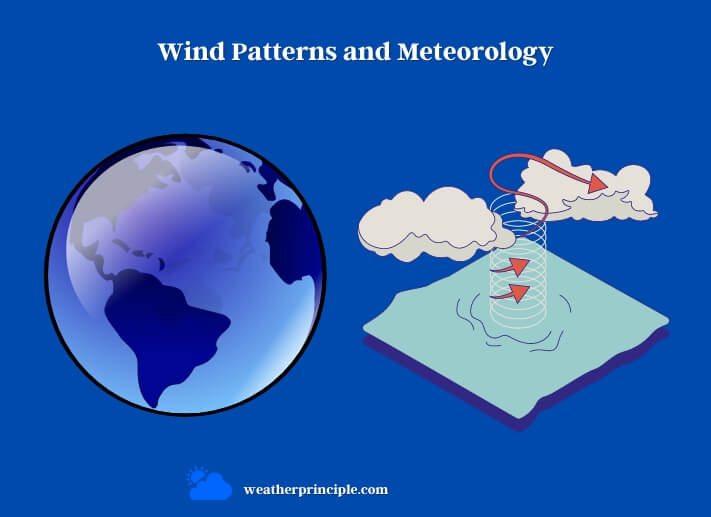
Wind patterns on a global scale
Global wind patterns are categorized into three main groups:
- Trade winds: These steady easterly winds are found in the tropics, blowing from the northeast in the Northern Hemisphere and the southeast in the Southern Hemisphere.
- Polar easterlies: These winds blow from the east near the poles, forming as cold, dense air moves away from the poles and is deflected by Earth’s rotation.
- Westerlies: These prevailing winds blow from the west, affecting the mid-latitudes in both the Northern and Southern Hemispheres.
The Beaufort Scale and Wind Classification
History of the Beaufort Scale
The Beaufort Scale was developed by Sir Francis Beaufort, a British admiral, in 1805 to help sailors estimate wind speeds based on observable sea conditions. It has since been adapted for use on land and serves as a widely recognized tool for classifying wind speeds.
Classification of wind speeds
The Beaufort Scale classifies wind speeds into 13 categories, ranging from 0 (calm) to 12 (hurricane-force). Each category corresponds to specific wind speed ranges and observable effects on land or sea.

Applications of the Beaufort Scale
The Beaufort Scale is used in various contexts, such as:
- Maritime navigation: Sailors rely on the Beaufort Scale to estimate wind conditions and make informed decisions about course adjustments and sail configurations.
- Storm warnings: Meteorologists use the Beaufort Scale to communicate the severity of storms and potential impacts on land and coastal areas.
Wind and Renewable Energy
Harnessing wind power
Wind energy is harnessed using wind turbines, which convert kinetic energy from the wind into mechanical energy, then into electrical energy. Groups of wind turbines form wind farms, which generate significant amounts of renewable energy.
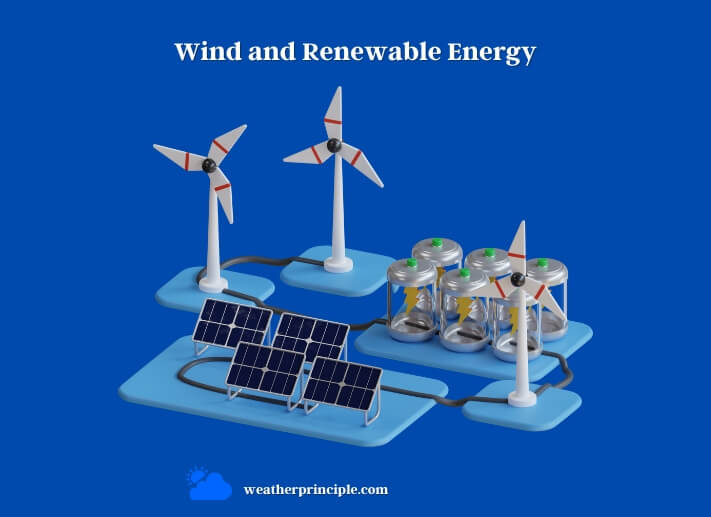
Factors affecting wind energy production
Wind speed and direction have a significant impact on wind energy production:
- Wind speed variability: Higher wind speeds generate more energy, but excessive speeds can damage turbines. As a result, turbines are designed to operate within a specific range of wind speeds.
- Wind direction: The orientation of wind turbines in relation to prevailing wind directions affects their efficiency. Modern turbines can adjust their orientation to optimize energy production.
Wind’s Impact on Sports and Recreation
Wind in sailing and windsurfing
Wind direction is vital in sailing and windsurfing, as it determines the angle at which a vessel can sail relative to its destination. Sailors must understand and adapt to changing wind conditions to navigate efficiently.
Wind’s role in aviation
Wind plays a significant role in aviation, affecting takeoff, landing, and turbulence:
- Takeoff and landing: Pilots must consider wind direction and speed during takeoff and landing to maintain control and ensure a smooth flight.
- Turbulence: Changes in wind speed and direction at different altitudes can cause turbulence, requiring pilots to adapt their flight paths or altitude to minimize discomfort for passengers.
The art of kite flying and wind-related hobbies
Kite flying, paragliding, and other wind-related hobbies rely on understanding wind speed and direction to achieve optimal performance and enjoyment.
Extreme Wind Events and Weather Phenomena
Hurricanes and typhoons
Hurricanes and typhoons are characterized by high wind speeds and spiral circulation patterns. Wind speed and direction play crucial roles in their formation, intensification, and movement.
Tornadoes and waterspouts
Tornadoes and waterspouts are rotating columns of air connected to a thunderstorm. Wind speed and direction contribute to the formation of these vortices and influence their movement and intensity.
Dust storms and derechos
Dust storms and derechos are high-speed wind events that can cause significant damage and reduce visibility. Understanding their wind dynamics helps predict and mitigate their impacts.
Conclusion
Summary of key points
Understanding the complexities of wind speed and direction is essential for a wide range of applications, including weather forecasting, renewable energy, and various recreational activities. A comprehensive knowledge of these aspects allows us to harness the power of wind, predict weather patterns, and make informed decisions in multiple industries.
The significance of understanding wind speed and direction in our daily lives
Gaining a deeper understanding of wind speed and direction not only helps us appreciate the natural forces at play but also enables us to adapt and make the most of our environment. By understanding the dynamics of wind, we can harness its potential in sustainable ways and mitigate the impacts of extreme wind events.
Frequently Asked Questions
Why do wind speeds and directions vary so much?
Wind speeds and directions are influenced by a variety of factors, including temperature differences, pressure gradients, Earth’s rotation, global circulation patterns, and local topography. These factors interact in complex ways, leading to variations in wind conditions.
How do meteorologists predict wind patterns?
Meteorologists use computer models, observational data, and an understanding of atmospheric dynamics to predict wind patterns. These models take into account various factors that influence wind speed and direction, such as temperature, pressure, and global circulation patterns.
Can wind energy ever replace fossil fuels completely?
While wind energy is a crucial component of the transition to renewable energy, it is unlikely to replace fossil fuels entirely due to its intermittent nature. However, combining wind energy with other renewable sources, energy storage solutions, and smart grid technologies can significantly reduce our reliance on fossil fuels.
How do pilots navigate through strong winds and turbulence?
Pilots rely on weather forecasts, real-time data, and their experience to navigate through strong winds and turbulence. They may adjust their flight path, altitude, or speed to minimize the impact of adverse wind conditions on the aircraft and ensure passenger safety.


